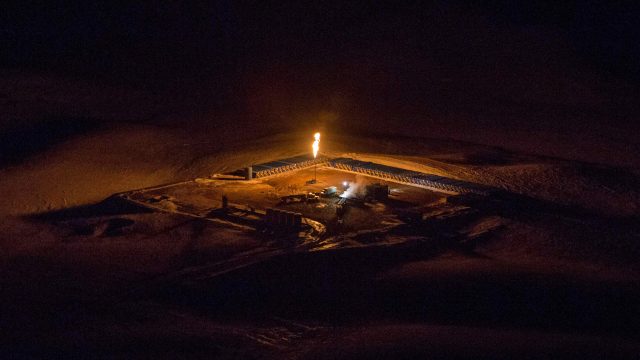More Regulation Won't Fix A Flaring Problem That's Caused By Over Regulation

The federal Bureau of Land Management was in Dickinson this week holding a forum on flaring on the Forth Berthold Indian Reservation.
It seems someone packed the room with people from outside of North Dakota – “About a hundred people, many from other states like Montana or Wyoming, filled a ballroom at the Ramada Grand Dakota Hotel in Dickinson,” reported Katherine Lymn for the Dickinson Press – and most of the people there were calling for a slow down to oil production.
Many who shared comments said with multi-well pads becoming more common and the Bakken in general shifting to full-field development, the flaring problem will only get worse unless BLM takes action in lowering the bar as to how long and how much flaring is allowed, and follows through with tough enforcement. Right now, operators have a royalty-free year to implement an action plan to eliminate flaring.
Tribal advocate Theodora Bird Bear said with the BLM understaffed for enforcement and with dangers of oil production like flaring, “it would seem common sense that BLM would institute a slowdown in this application process.”
Bird Bear, of course, is a bit more than a “tribal advocate.” She’s also a member of the Dakota Resource Council, an environmentalist headed by far-left activist Don Morrison that’s dedicated to stopping the fossil fuel energy industry in North Dakota.
So it’s not surprising that left-wing activists like Bird Bear are chanting the “slow it down” mantra. But really, we should be saying “speed it up.” At least when we’re talking about the process involved with building pipelines and other infrastructure needed to reduce flaring.
Statewide the percentage of gas produced that is flared off is about 36 percent (a number inflated in recent months because of a shutdown of a gas plant near Tioga for upgrades). But on state lands only that number drops to about 29 percent. On federal lands, specifically the Forth Berthold Indian Reservation where about 30 percent of oil in North Dakota is produced, the flaring percentage is above 40 percent.
Why the disparity? The bureaucratic process for approving pipelines and other infrastructure on federal land is much more arduous than it is on state land.
Right-of-way easements for the infrastructure to gather the gas is harder to get from the tribe, according to Tessa Sandstrom, spokeswoman for the North Dakota Petroleum Council. Also, the infrastructure gets permit scrutiny from three separate federal agencies: The Bureau of Indian Affairs, the Bureau of Land Management and the US Fish & Wildlife Service. There is also a tribal requirement for a half-mile setback for all pipelines and condensers from any occupied structure.
Because there is more bureaucracy for building gas-capturing infrastructure on federal lands, we end up with more flaring. Because there is less bureaucracy for state lands, we get less flaring.
What left-wing activists like Bird Bear want is for the federal government to respond to a problem created by excessively complicated regulation slowing down the build out of infrastructure with more regulation to slow down the production of oil in general.
That’s ridiculous.




